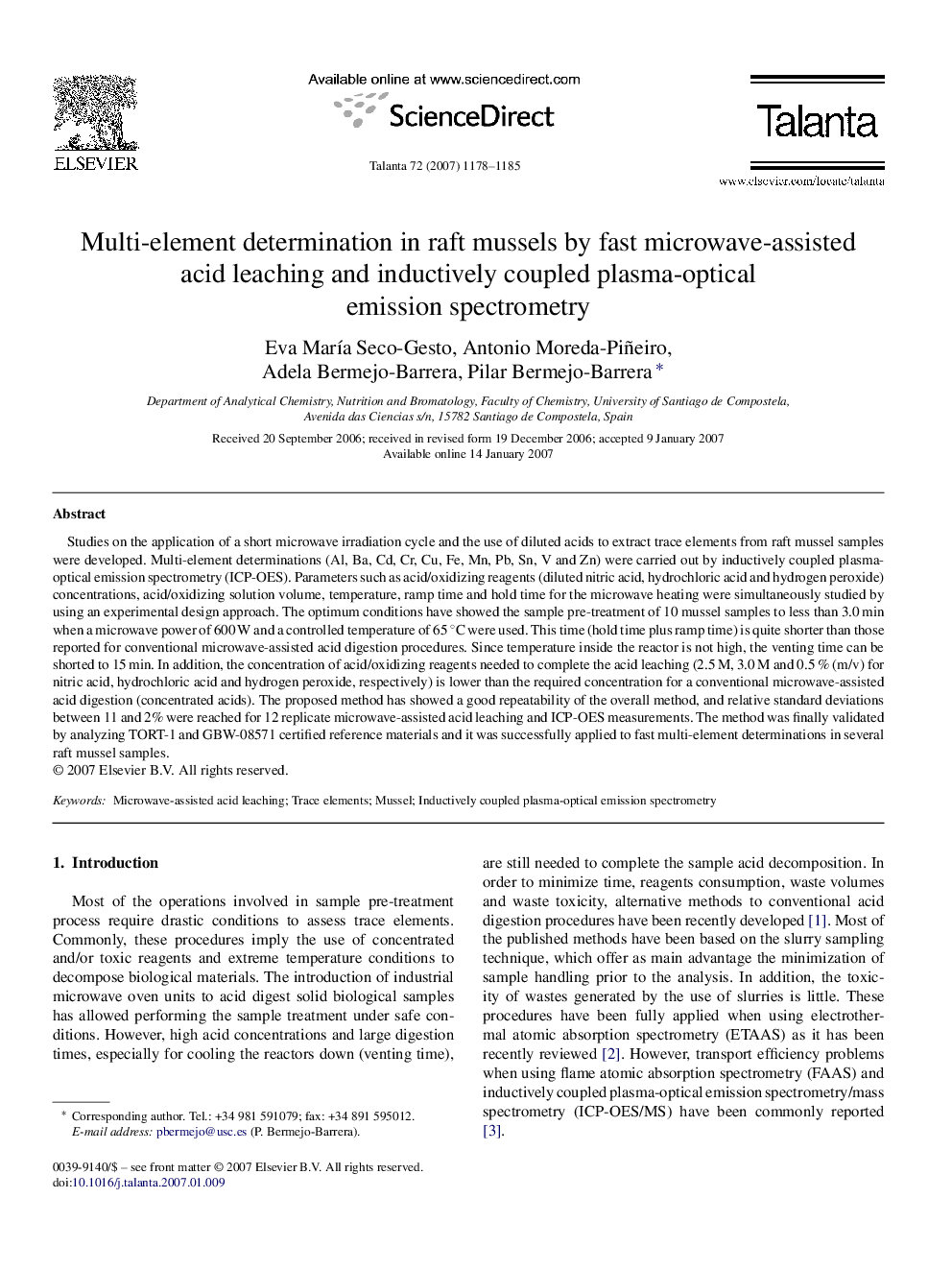| Article ID | Journal | Published Year | Pages | File Type |
|---|---|---|---|---|
| 1245017 | Talanta | 2007 | 8 Pages |
Studies on the application of a short microwave irradiation cycle and the use of diluted acids to extract trace elements from raft mussel samples were developed. Multi-element determinations (Al, Ba, Cd, Cr, Cu, Fe, Mn, Pb, Sn, V and Zn) were carried out by inductively coupled plasma-optical emission spectrometry (ICP-OES). Parameters such as acid/oxidizing reagents (diluted nitric acid, hydrochloric acid and hydrogen peroxide) concentrations, acid/oxidizing solution volume, temperature, ramp time and hold time for the microwave heating were simultaneously studied by using an experimental design approach. The optimum conditions have showed the sample pre-treatment of 10 mussel samples to less than 3.0 min when a microwave power of 600 W and a controlled temperature of 65 °C were used. This time (hold time plus ramp time) is quite shorter than those reported for conventional microwave-assisted acid digestion procedures. Since temperature inside the reactor is not high, the venting time can be shorted to 15 min. In addition, the concentration of acid/oxidizing reagents needed to complete the acid leaching (2.5 M, 3.0 M and 0.5 % (m/v) for nitric acid, hydrochloric acid and hydrogen peroxide, respectively) is lower than the required concentration for a conventional microwave-assisted acid digestion (concentrated acids). The proposed method has showed a good repeatability of the overall method, and relative standard deviations between 11 and 2% were reached for 12 replicate microwave-assisted acid leaching and ICP-OES measurements. The method was finally validated by analyzing TORT-1 and GBW-08571 certified reference materials and it was successfully applied to fast multi-element determinations in several raft mussel samples.
